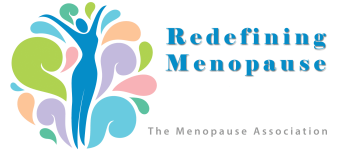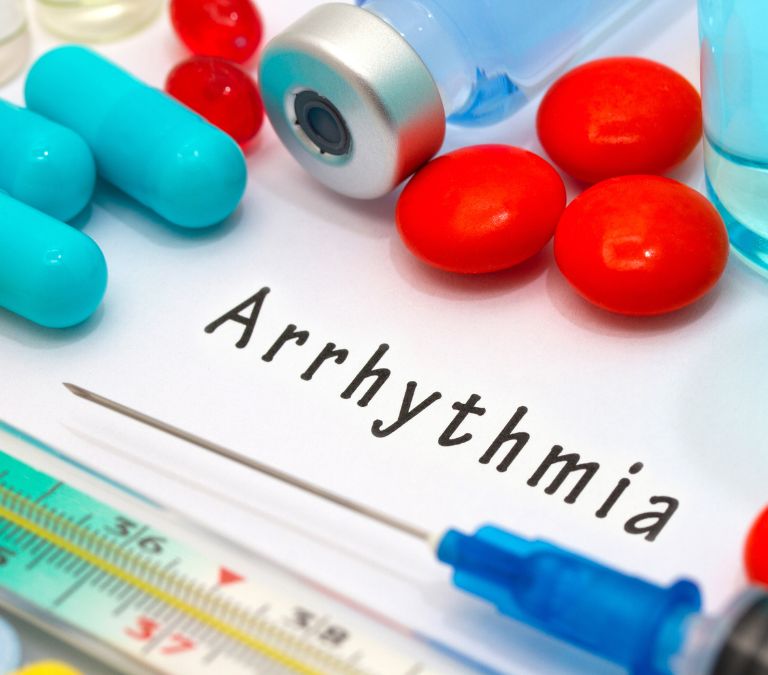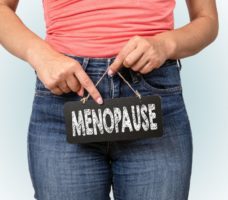While menopause is characterized by the inability to reproduce, hormone fluctuations during this phase might cause the development of certain symptoms that, in many cases, can be severe. Some common symptoms of menopause include hot flashes, night sweats, bloating, vaginal dryness, anxiety, and sleep disruption. On getting to menopause, the average woman becomes more vulnerable to several diseases, and this makes the phase extra difficult.
Understanding Menopause
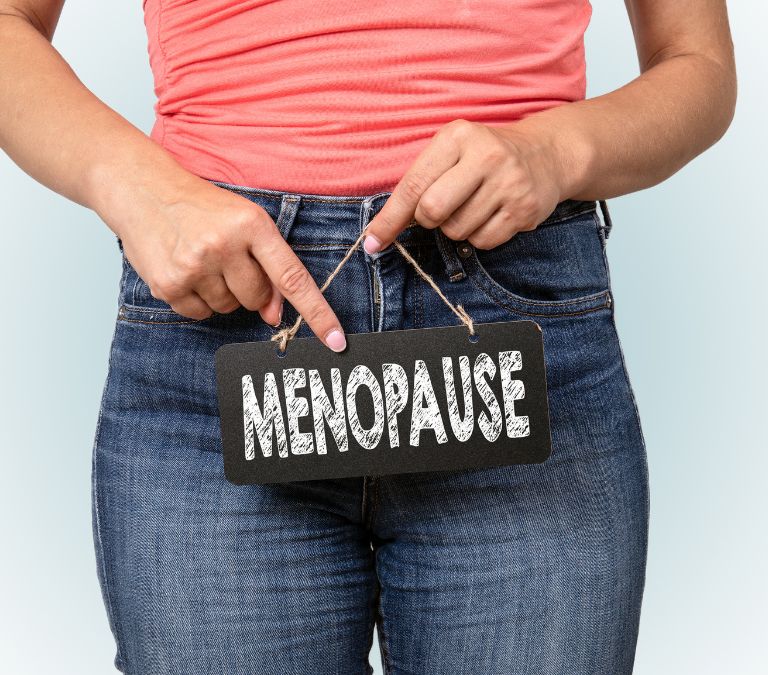
Menopause is the natural phase of every woman’s life when natural conception becomes impossible. During menopause, the ovaries lose the ability to produce eggs, which signifies the loss of childbearing abilities. The ovaries are the major producers of sex hormones in the body, and when the ovaries fail, a decline in hormones is very likely. Sex hormones, like estrogen, progesterone, and testosterone, perform important functions in the body, and when these hormones decline, damning consequences are bound to happen.
On getting to menopause, the average woman becomes more vulnerable to problems triggered by ovarian failure. From the very common hot flashes to less common cases of brain fog and certain cancers, a decline in sex hormones can be quite consequential sometimes. Hormone fluctuations cause most of the symptoms experienced by menopausal women. The severity of symptoms usually varies as different women react differently to menopause.
Menopause is introduced into the body by a phase known as perimenopause. Perimenopause is the body’s way of preparing for menopause; irregular periods become imminent during this period. Also, some of the most severe menopausal symptoms are experienced during perimenopause. A woman is not confirmed as menopausal until she has gone through a whole year without periods.
Immediately she goes 12 months with no periods and is confirmed as menopausal. Along with arrhythmia, menopausal symptoms include hot flashes, night sweats, bloating, vaginal dryness, vaginal itching, osteoporosis, weight gain, anxiety, mood swings, depression, memory loss, brain fog, sleep disruptions, inability to concentrate, and certain cancers. In most cases, women go through a smooth transition into menopause with only a few complications, while in other cases, women experience the most excruciating complications in their menopausal journey.
Understanding Arrhythmia
Arrhythmia is a condition that causes irregularities in the beating of the heart. Arrhythmia is formed from the dysfunction of the electrical signals coordinating the heart’s beating. With the dysfunction of these signals, the heart tends to beat too slow, too fast, or beat irregularly without a distinct pattern. Generally, most cases of arrhythmia are harmless. However, some cases may cause excruciating bodily damage and often require immediate attention.
Arrhythmia is normal sometimes. For example, the heart is built to respond to certain activities and occurrences. During exercises and other physical activities, the heart tends to beat faster, and while asleep, the heart beats slower. However, there are many cases of arrhythmia where the heart beats irregularly for no perceived reason. Cases like these usually require treatment.
Types of Arrhythmia
The type of arrhythmia depends solely on the speed of the heartbeat. There are two types of arrhythmia: Tachycardia (fast heartbeat) and Bradycardia (slow heartbeat).
Tachycardia
A fast heartbeat characterizes tachycardia. Tachycardia is formed when the heart rate goes over 100 beats per minute. Usually, a fast heartbeat isn’t a problem. This is because the heartbeat rate tends to increase during exercises or stress. However, if not treated, persistent cases of fast heartbeat could lead to severe health complications like heart failure and even cardiac arrest. Tachycardia comes in many forms, and while many aren’t considered severe, they all require treatment to prevent worsening situations.
Symptoms of Tachycardia
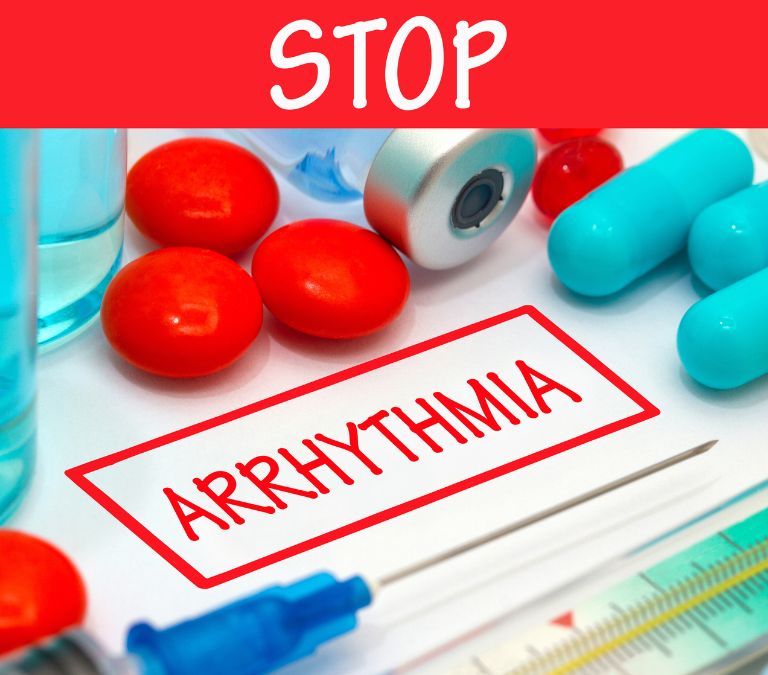
Oxygen is one of the most important elements transported in the blood. When the heart pumps blood, it delivers oxygen to various areas of the body, ensuring continuity of life. When the heat rate goes up, oxygen isn’t well transported to important organs and tissues of the body. This results from the heart not pumping enough blood to the rest of the body.
After a beat, blood flows through the vessels and into certain body areas. Unfortunately, a fast heart rate wouldn’t give time for the blood to be well transported before bringing the oxygenated blood back to the heart. This mechanism could cause restlessness, confusion, headaches, shortness of breath, and even organ failure. Some common symptoms of tachycardia include chest pain, lightheadedness, shortness of breath, a sensation of a pounding heartbeat, and fainting.
In some cases, tachycardia appears without any symptoms. A general physical exam will often lead to a diagnosis in these cases.
Causes of Tachycardia
The most common cause of tachycardia is exercise or stress. However, tachycardia caused by physical exercise or stress isn’t a disease. Some common causes of tachycardia include heavy alcohol use, smoking, problems with blood pressure, fever, side effects from medications, overactive thyroid, deficiency of substances like sodium, magnesium, and potassium in the blood, and high consumption of caffeine. However, there are several cases of tachycardia today with unknown root causes.
Bradycardia
The slow rate of heartbeat characterizes bradycardia. Normal heart rate is considered between 60 and 100 beats per minute. When the heart rate goes below 60, it is considered slow and can be a serious problem. Just like tachycardia, bradycardia doesn’t always pose serious concerns. This is because when the body is at rest, the heart rate falls below 60 and often remains between 40 and 60 beats per minute.
Symptoms of Bradycardia
When the heart rate slows down, the brain and several important organs are denied adequate oxygen, leading to complications like chest pain, fatigue, shortness of breath, dizziness, confusion, and shortness of breath.
Many cases of bradycardia appear without any symptoms.
Causes of Bradycardia
Bradycardia is caused by several factors, from aging to damage to the heart tissues and inflammation; slow heart rate is more common than you think. Some other causes of bradycardia include inflammatory diseases like rheumatic fever and lupus, complications from heart surgery, medications like sedatives, opioids, and other drugs of the heart, frequent pauses in breathing, especially while sleeping, imbalance in chemicals like calcium and potassium, underactive thyroid gland, and a congenital heart defect.
Links between Menopause and Arrhythmia
Menopause has not been proven to be a direct cause of arrhythmia. However, studies from the American Heart Association have suggested that menopausal women have an increased risk of developing tachycardia and other cardiovascular diseases.
The estrogen hormone serves several functions in the body, and one of these functions is the protection of the blood vessels. It protects the arteries by limiting the buildup of fats in the arteries. When menopause steps in and estrogen levels decline, your arteries become more likely to be clogged by fats, leading to several cardiovascular diseases.
Major phases of life experienced by women come with estrogen fluctuations. From menstruation to pregnancy and then to menopause, estrogen decline is a characteristic feature of these phases, and this is why problems like heart palpitations and cardiovascular diseases are common in these groups of women.
While arrhythmia affects more men than women, there are more menopausal women suffering from it than other women. Generally, the risks of arrhythmia increase as you age. However, menopause plays a huge role in developing many cardiovascular diseases, including tachycardia.
Sometimes, a fast heart rate happens during hot flashes. Several women have reported increased heart rate during hot flashes. Hot flashes come from heat sensations in the chest region that often spreads throughout the body. Hot flashes are usually painful and discomforting. During hot flashes, the heartbeat rate can increase above 100 beats per minute, and while it only lasts for a short time, it could cause serious problems if not handled effectively.
Prevention Tips for Arrhythmia
Certain factors can trigger arrhythmia, and with the help of research, several preventive measures have been established. Here are a few prevention tips for arrhythmia during menopause:
Reduce Intake of Coffee and Caffeinated Products

Coffee has become so popular worldwide. In the United States, it is estimated that more than 90 percent of the population consumes coffee and caffeinated products. Generally, caffeinated products have been studied to aggravate vasomotor symptoms like hot flashes and night sweats. Studies have shown that menopausal women who consume large amounts are caffeinated products are very likely to experience worrying cases of vasomotor symptoms.
Recent studies have shown that the stimulating effects of caffeine on the heart may likely cause palpitations. However, other studies have found zero effects of caffeine on the heart. With more research still being done, it is suggested that regular consumers of coffee are less likely to experience heart problems because the body has adapted to the effects of caffeine. However, new consumers of caffeine could have higher levels of sensitivity to its effects and, as such, may be more likely to have heart diseases.
Generally, menopausal women should limit their total caffeine intake, and if you have an underlying heart condition, you should avoid coffee and its products completely.
Get Enough Healthy Sleep
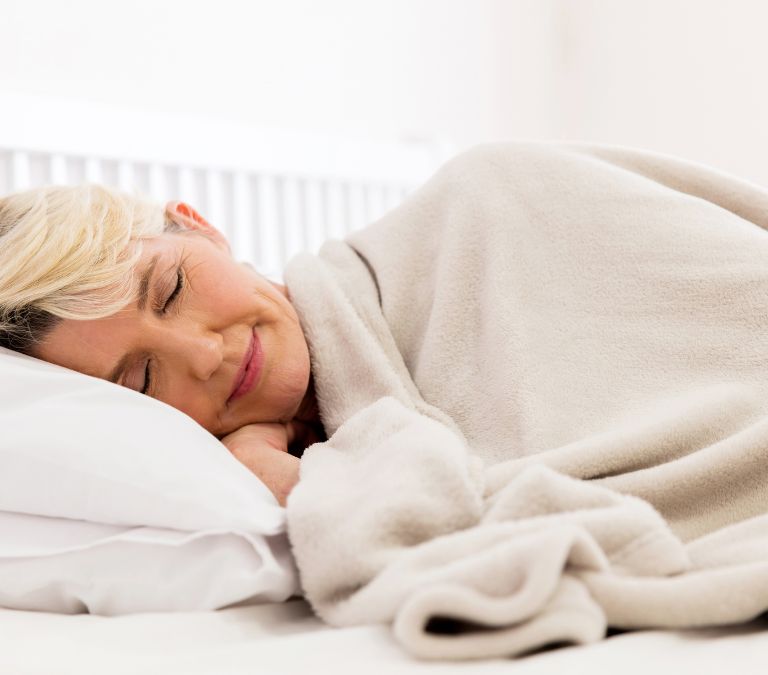
Studies have shown that getting healthy sleep is one of the best ways of helping the body stay healthy. Getting good and long hours of sleep can help optimize the heart’s functioning. Heart problems are one of the leading causes of death in the United States, and some studies have shown that just by getting the right amount of sleep, cases of heart problems and other cardiovascular diseases can be reduced by almost 50 percent.
While sleeping, the heart beats more slowly, giving time for the heart to rest. Sleep helps the body and mind to recharge, helps you maintain a healthy weight, lowers your risks of cardiovascular diseases, helps you reduce stress and brighten your mood, and helps you focus and think more clearly.
Due to the rising need to make money and keep up with the rising costs of literally everything, many people today aren’t getting enough sleep. Menopausal women need between 7 to 9 hours of sleep. However, many women only get between 3 to 5 hours of sleep today. During menopause, it becomes extra difficult to get enough healthy sleep.
Menopausal women have often complained of difficulty getting to sleep, difficulty staying asleep, reduced daily sleep time, tiredness, and early morning wakening. Cases of sleep abnormalities can be common during menopause, but how does the body react to the lack of sleep? After all, sleep is very important, right?
While menopausal symptoms like hot flashes and night sweats can make it difficult to get long hours of sleep, certain measures have been made to ensure you get the sleep you need.
10 Habits That Could Lead To Poor Sleep and Ultimately Hypertension
Poor sleep could cause an increase in blood pressure. Here are 10 habits that could influence you not getting enough sleep.
Eating too close to bedtime.
A full stomach or a full bladder before going to bed can lead to frequent visits to the bathroom in the middle of the night. Many menopausal women have complained that they find it difficult to return to sleep after waking up too early. To help with this, eating dinner 3 hours before sleeping is advised. Also, light meals are advised to be eaten for dinner as heavy foods may lead to discomfort while sleeping.
Discomforts while sleeping
While sleeping, the body is in a state of unconsciousness. However, a sleeping person is very different from someone in a coma. With a strong stimulus, a sleeping person can be aroused. While sleeping, ensure your bed is as comfortable as it can be. This way, you can stay asleep all night without adjusting your position. Sleeping in a discomforting place or using a discomforting posture while asleep can cause frequent waking up, which can generally shorten your sleep time.
Taking coffee late in the day
Taking coffee just before bed can make you stay awake and active when you should be sleeping. If you must take coffee, it should be during the early hours of the day and not at a later time.
Working out just before bed
Doing exercises and other physical activities just before bed is not a good idea. While exercises are important for healthy sleep, studies have shown that exercising before bed may raise your body temperature and heart rate and make it more difficult to sleep well. Exercises should be done at least an hour before going to bed.
Staring at screens while in bed
Staring at televisions, laptops, and smartphones while in bed will not make you sleep. The light from screens can trigger the brain to stay asleep even when sleep time comes.
Irregular Sleeping Pattern
Not sticking to a fixed sleeping pattern can mess up your night’s sleep and make it difficult to fall asleep when the time to sleep comes. To get the best healthy sleep, you should sleep at a fixed time and wake up at a fixed time.
Long Naps
Naps can be important to the body. However, studies have shown that taking long naps during the day can cause fragmentation in your night sleep. Some people take long naps during the day and still go on to sleep long hours at night. People who find sleeping difficult are not advised to take long naps during the day.
Sleeping in Discomforting Temperature
Your room shouldn’t be too cold or too hot. To help you sleep better, it is important to sleep at a temperature of or near 18.4°C.
Drinking Alcohol before Going to Bed
Studies have shown that healthy people who consume alcohol fall asleep and might see good results. These studies show that alcohol can make you fall asleep quicker and deeper, but only for a while. While alcohol may show good enough effects in helping you sleep better, it can kill your dream sleep and cause fragments in your total sleeping time. The sedative effects of alcohol are temporary, and when they wear off, they could backfire. Frequent use of alcohol can lead to addiction, and it may become difficult for you to fall asleep without taking alcohol.
Sleeping in a noisy environment
Sleeping amid noise can keep you awake, and frequent waking up is imminent when you fall asleep. To drown out the noise, you can use white noise. This will help you sleep better.
Avoid Tobacco Products and Alcohol
Consumption of alcohol and tobacco products can cause irregular heartbeat. Research has shown that heavy consumption of alcohol can increase your risk of developing atrial fibrillation, a form of tachycardia. Heavy consumption of alcohol can lead to symptoms like shortness of breath, dizziness, fatigue, chest pain, and heart palpitations. Generally, heavy consumption of alcohol poses serious threats to vital organs of your body. To maintain a healthy body, it is important to limit the intake of alcohol or, better still, avoid it completely.
Treatment of Menopausal Arrhythmia
There are several important guidelines important in the prevention of menopausal arrhythmia. Some of them include:
Hormone therapy
Hormone therapy is generally used for treating menopausal symptoms. Ovarian failure during menopause causes the decline in estrogen and other hormones, leading to certain symptoms. Women who experience several menopausal symptoms are advised to go for hormone therapy, which has shown significant results in helping menopausal women with their symptoms. Hormone therapy involves putting more hormones into the body to balance hormone levels and eradicate hormone-linked menopausal symptoms.
Many menopausal women have taken hormone therapy and have seen significant improvements in conditions like tachycardia and other menopausal symptoms. While hormone therapy has proven useful for arrhythmia during menopause, the risks involved in its use have made many women seek alternatives.
Studies have shown that long-term use of hormone therapy could cause more heart problems, like blood clots, stroke, and even certain cancers. Generally, a medical doctor will explain all you have to know before taking hormone therapy and tell you if it is right for you. Due to the risks involved in hormone therapy, alternatives have been made available for treating arrhythmia during menopause. Some of these alternatives include:
Diet Options
Healthy diet options are one of the best management, treatment, and preventive measures for many menopausal symptoms. Generally, adding more healthy foods to your diet can go a long way in developing and maintaining healthy organs and tissues of the body. Studies have shown that menopausal women who consume more healthy foods like fruits and veggies are far less likely to develop problems with their cardiovascular system.
Maintaining a healthy weight is a crucial part of maintaining a healthy heart. More fat in the abdominal region can cause problems like high blood pressure, high blood sugar, and increased levels of triglycerides. These problems can affect the heart and increase its risks of diseases. Abdominal fat is closer to vital internal organs, narrowing blood vessels, increasing blood flow and pressure. Generally, obese or overweight women are at an increased risk of developing an irregular heartbeat.
You can include more leafy greens in your diet to help prevent weight gain and develop a healthy heart. Leafy greens are known for their high content of vitamins, minerals, and antioxidants. All these entities help protect the arteries and ensure optimal blood clotting.
Studies have shown that increasing your intake of leafy greens can help reduce your risks of heart disease by more than 15 percent. Also, foods like whole grains, avocados, fatty fish, berries, beans, walnuts, almonds, and tomatoes can be quite helpful in maintaining a healthy heart and reducing arrhythmia risks. A healthy diet comes with immense benefits, and as menopausal women, it will certainly help you in your menopausal journey.
Exercises and Other Physical Activities

Women that actively engage in exercises are more likely to improve general cardiovascular health and the heart’s natural rhythm. Exercises also help relieve stress and anxiety. Menopausal women are advised to engage in aerobic exercises like walking, jogging, running, biking, swimming, and cycling.
Aerobic exercises help strengthen the heart, reducing the risks of hypertension, palpitations, and several other cardiovascular diseases. However, some women have reported increased palpitations and heart problems after exercising. For this reason, menopausal women with arrhythmia are advised to have a comprehensive discussion with a doctor before starting any exercise routine.
Conclusion
Problems with the heart and cardiovascular system usually require urgent attention. Unfortunately, menopause, among other things, makes you vulnerable to problems in the cardiovascular system. Menopause is a compulsory phase, but the symptoms aren’t. This means that with the right treatment and management options, you can go through a smooth transition into menopause with only a few complications. Since you can’t control when your body goes into menopause, you can control how it reacts.
